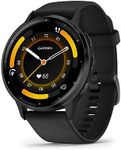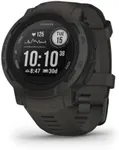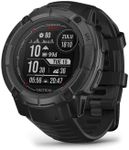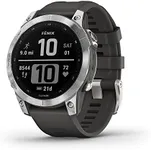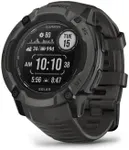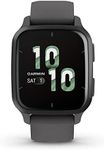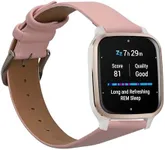Buying Guide for the Best Garmin Hiking Watch
Choosing a hiking watch, especially from a brand like Garmin, can really enhance your outdoor adventures by providing useful data and safety features. The right watch can help you navigate, track your fitness, and stay connected even in remote areas. To find the best fit, it's important to understand the key features and how they relate to your hiking style and needs. Think about where you hike, how long your trips are, and which features will actually help you enjoy your time outdoors more.GPS AccuracyGPS accuracy refers to how precisely the watch can determine your location. This is crucial for navigation, tracking your route, and ensuring you don't get lost. Some watches use basic GPS, while others combine multiple satellite systems (like GLONASS or Galileo) for better accuracy, especially in challenging environments like dense forests or deep valleys. If you mostly hike in open areas, basic GPS may be enough, but for mountainous or heavily wooded trails, a watch with multi-system support will give you more reliable tracking.
Battery LifeBattery life tells you how long the watch can operate before needing a recharge, which is especially important for longer hikes or multi-day trips. Some watches last a day or two with all features active, while others can stretch to a week or more in power-saving modes. If you do short day hikes, standard battery life is usually fine, but for backpacking or remote adventures, look for models with extended battery options or solar charging to avoid running out of power.
Durability and Water ResistanceDurability and water resistance describe how well the watch can handle tough conditions like rain, mud, bumps, and drops. Most hiking watches are built to military standards for shock and temperature resistance, and have water resistance ratings that let you use them in the rain or even while swimming. If you hike in rough terrain or unpredictable weather, prioritize a watch with high durability and at least 50 meters of water resistance to ensure it keeps working no matter what.
Navigation FeaturesNavigation features include things like built-in maps, breadcrumb trails, and the ability to set waypoints or follow pre-planned routes. Some watches offer simple back-to-start navigation, while others have full-color topographic maps and route planning. If you like exploring off the beaten path or want extra confidence in unfamiliar areas, look for advanced navigation tools. For well-marked trails or casual hikes, basic navigation may be all you need.
Health and Fitness TrackingHealth and fitness tracking covers features like heart rate monitoring, step counting, sleep tracking, and even blood oxygen measurement. These can help you monitor your fitness progress and stay aware of your body's condition during hikes. If you’re interested in improving your fitness or want to keep an eye on your health during strenuous hikes, choose a watch with comprehensive tracking. If you just want basic activity stats, simpler models will do the job.
Smart FeaturesSmart features include things like smartphone notifications, music storage, and contactless payments. These can make your hiking experience more convenient, letting you leave your phone in your pack or listen to music without extra devices. If you like staying connected or want entertainment on the trail, look for watches with these extras. If you prefer to disconnect while hiking, you can focus on models with fewer smart features.
Altimeter, Barometer, and Compass (ABC Sensors)ABC sensors help you track your elevation (altimeter), predict weather changes (barometer), and find your direction (compass). These are especially useful for mountain hiking or when navigating without clear trails. If you hike in areas with changing weather or elevation, or if you like to navigate with traditional tools, a watch with reliable ABC sensors is a great choice. For flat, familiar trails, these may be less critical.
